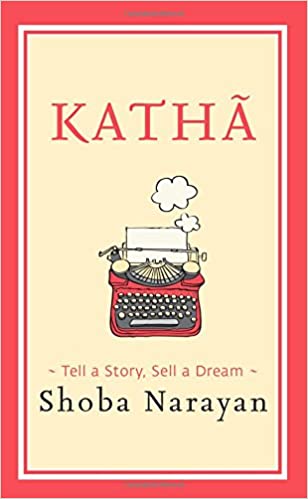What Makes a Good Story? – An Extract from ‘Katha: Tell a Story, Sell a Dream’ by Shoba Narayan

Telling stories is an interactive act. Think back to a time when you were inspired by a story. It could be something that an uncle recounted on the terrace after dinner. It could be a friend describing an incident at a party. When you really consider it, the elements of a good story are startlingly small in number. They are suspense, characters, plot, conflict and resolution.
Suspense is the desire to want to know what is going to happen next. Characters are strong individuals that you can somehow identify with and yet, are heroic in their goals. Plot or action decides the narrative flow of the story. And the entire structure of the story is based on two things: conflict and resolution. These are the bones on which the body of stories is built.
While there are some people who are great, natural raconteurs, most of us, particularly in this day and age when we depend on technology for communication, have lost the art of storytelling. The good news is that it can be cultivated.
So what do you do if you want to become a good storyteller?
The first thing to do is to watch how it is done. Thankfully, there are many mediums available for the budding storyteller. For starters, watching standup comedy, TED talks, commencement addresses or great speeches in history are good ways to pick up some storytelling skills. Most, if not all, of these are available on the Internet. The trick is to watch them deliberately, with attention, paying heed to the choice of words, the rhythm of sentences, how these good speakers pace their lectures, where they pause and how they use silences.
These are some iconic speeches that anyone interested in oration should listen to:
• Jawaharlal Nehru’s ‘Tryst with Destiny’ speech.
• Mahatma Gandhi’s ‘Quit India’ speech.
• Rabindranath Tagore’s ‘Crisis of Civilization’ speech.
• Swami Vivekananda’s speech at the World Parliament of Religions.
• Bal Gangadhar Tilak’s ‘Freedom is My Birthright’ speech.
***

Some of the most successful people of our times are master storytellers. From Steve Jobs to N.R. Narayana Murthy, from Indra Nooyi to Rakesh Jhunjhunwala, the best communicators are those who effectively use stories, analogies, metaphors and even jokes to get their message across.
Maybe you are an entrepreneur, trying to sell your business plan to potential investors. Maybe you are the head of a company, trying to influence your employees to follow a rather unconventional path. Or a mid-level manager, trying to convince your boss to take a chance on a project. No matter which field you are in, there comes a time when you have to persuade and influence and there’s no better way to do it than by narrating stories.
Katha: Tell a Story, Sell a Dream is about the art of storytelling in business. It tells you why stories are important, when you must tell a story and how to find and tell the most effective tales, whether you are communicating to stakeholders, business associates, employees or colleagues.
***

